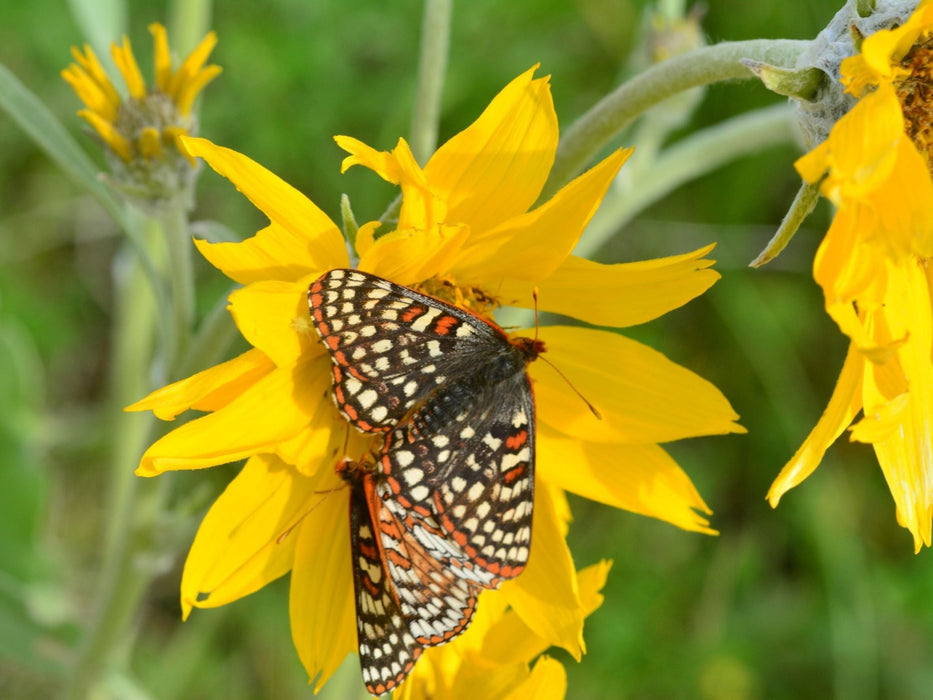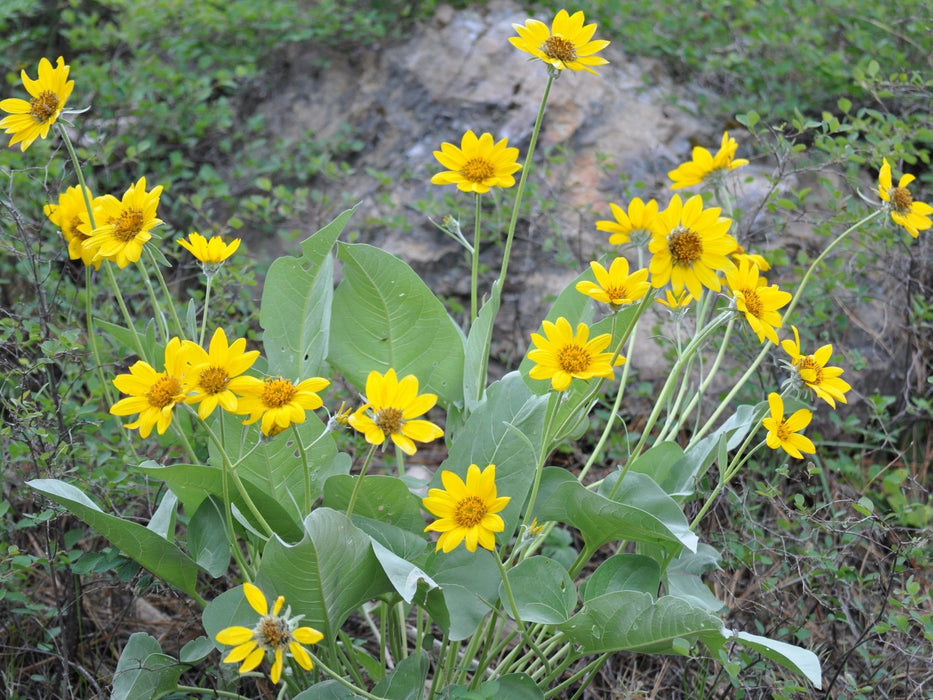
Arrowleaf Balsamroot Seeds (Balsamorhiza sagittata)
Balsamroot (Balsamorhiza sp.) and mule’s ears (Wyethia sp.) are the western state equivalents to the glorious Silphiums of Midwestern tallgrass prairies (such as cupplant, compass plant, and prairie dock). This subtribe of the sunflower family produces interestingly tough, wide leaves, thick resinous stalks, large, showy flowers, and notoriously deep tap roots that can extend to mysterious depths. We have a friend who once tried to dig up and transplant a balsamroot, excavating the taproot for more than a dozen feet along a hillside until the end disappeared inside a crack in the bedrock.
Of the balsamroots, arrowleaf is the most widespread and adaptable, occurring across the Inland Northwest, and broader West from Canada to Arizona (as far east as South Dakota). It’s a tolerant, carefree, and adaptable plant that shows up in dry prairies, rocky hillsides, and openings in pine forests. In any of those locations individual plants could potentially persist for a century – perhaps multiple centuries – where they greet every spring with the same cheerful bright yellow disks. About the only thing they won’t tolerate is constant, persistent grazing by cattle and horses.
All parts of balsamroot are edible, but many parts are resinous tasting. Still, one can produce an interesting tincture or extract from the flowers of balsamroot (and mule’s ears and gumweed) that is used as a folk remedy in much that same way as Echinacea.
Balsamroot is an excellent spring bumble bee and butterfly plant. Some of the flower visitors that we know of include Edith’s checkerspot (Euphydryas editha), various skipper butterflies, the Coronis frittilary (Speyeria coronis), American painted lady (Vanessa virginiensis), and various swallowtails (Papilio sp.).
Approximately 150 seeds (1.5 grams).

